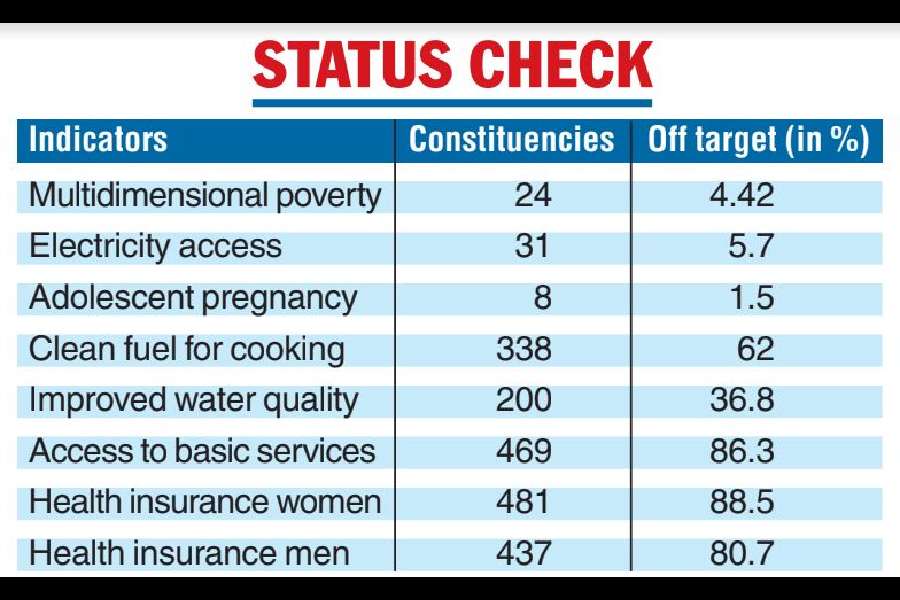The richest five per cent of urban Indian households spend nearly 10 times more than the poorest five per cent on food and other necessities such as children’s education, medical treatment, transport and clothing, a government survey has found.
In rural areas, the richest five per cent spend nearly eight times more than the poorest five per cent — whose daily expenditure is as low as Rs 46 — shows the Household Consumption Expenditure Survey (HCES) for 2022-23, released by the National Sample Survey Office on Saturday.
The survey found that the estimated average Monthly Per-capita Consumer Expenditure (MPCE) in 2022-23 was Rs 3,773 — Rs 1,750 on food and Rs 2,023 on “non-food” items — in rural areas and Rs 6,459 (Rs 2,530 on food and Rs 3,929 on non-food items) in urban areas.
Non-food items include medical treatment, education, conveyance, consumer services, entertainment, rent, clothing and bedding, durable goods, footwear, and tobacco.

The average MPCE for the bottom five per cent of the population was Rs 1,373 in the villages and Rs 2,001 in urban areas. The top five per cent had average MPCEs of Rs 10,501 and Rs 20,824, respectively, in rural and urban areas.
Nine states — including Bengal, Odisha, Jharkhand, Bihar and Assam — lagged behind the national average. Bengal’s figures were Rs 3,239 (rural) and Rs 5,267 (urban).
In 2011-12, the average nationwide MPCE figures were Rs 1,430 and Rs 2,630, respectively, for rural and urban areas, which suggests an about two-and-a-half-times rise in household expenditures in just over a decade.
However, K.L. Dutt, a retired Indian Economic Services officer and an expert on poverty estimation, said the two surveys cannot be compared because the methodology was changed in 2022-23.
Among other things, the number of items in the non-food category was increased, he said.

The survey is held once in about five years but the government has not released the findings of 2017-18. Unconfirmed reports say that survey suggested a four-decade low in consumer expenditures.
Deepa Sinha, an activist associated with the Right to Food campaign, said the difference between the top five per cent and bottom five per cent showed that the poor were “struggling to make a living”.
“A person manages all his expenses with Rs 46 a day! The government’s claim about a V-shaped recovery falls flat in the face of this data,” Sinha said.
The households of those engaged in casual farm labour had an MPCE of Rs 3,273 in rural areas — the lowest among all the occupations.
The Scheduled Castes and Scheduled Tribes spent Rs 3,474 and Rs 3,016, respectively, in rural areas and Rs 5,307 and Rs 5,414, respectively, in urban areas.
Among the states, Sikkim had the highest MPCEs in both rural and urban areas (Rs 7,731 and Rs 12,105) and Chhattisgarh the lowest (Rs 2,466 and Rs 4,483).
The survey was carried out between August 2022 and July 2023, covering 261,746 households, 15,5014 of them in rural areas and 106,732 in urban areas.
While the survey of 2011-12 asked questions about 347 items, the latest one did so about 405 items, the report says.











